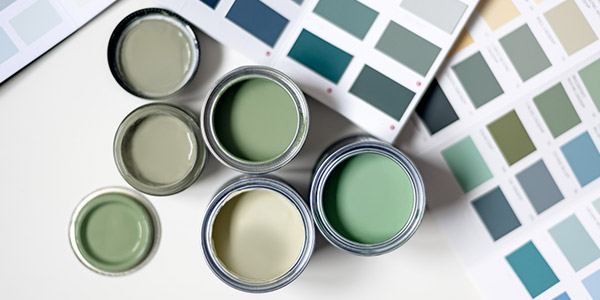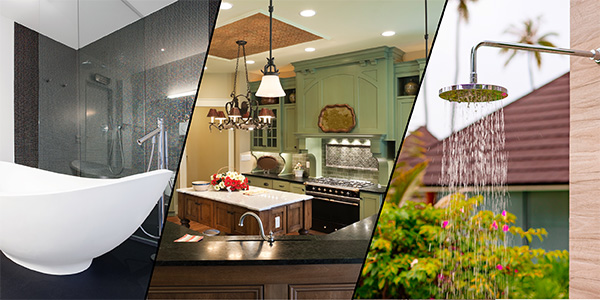Housing News
Adding Color to Your Home: Painting Tips
September 12, 2018
Whether you are moving in or moving out, painting is usually involved. Before you grab a few cans of a neutral tone to freshen up your walls, consider how you want your rooms to feel to those who spend time in them.
Conveying a Mood
We often use colors to paint a picture of how we are feeling: green with envy, feeling blue, or seeing red. Similarly, the colors we choose to live with convey emotions and can influence how we experience spaces. That’s why, when it comes to choosing colors for rooms of your home, it helps to think about each room’s purpose and how the color scheme you choose can enhance its effectiveness.
For instance, if you like to entertain, a formal dining room that uses purple tones can color the experience with a sense of luxury, enhancing the enjoyment and memory of a special dinner. A living room designed with hues of green can invoke a sense of natural calm. Alternatively, a bedroom with too much red may inadvertently interfere with sleep due to the color’s association with alertness – there is a reason red is the international color of warning.
Coloring Perceptions
Color can even influence the perception of a room’s form. Designers will often use colors and tones to highlight or downplay features. For instance, rooms with exceptionally high ceilings can seem cold or cavernous. Designers often use a dark color on the ceiling to visually lower it and make it seem cozier. Similarly, oversized rooms are often rendered in rich, dark colors to make them feel more intimate.
On the other hand, smaller rooms can seem less confining when painted in light colors, just as rooms with limited light sources may be painted in sunny, yellow tones to provide a sense of light and optimism regardless of the weather or time of day.
Choosing Paint You Can Live With
While color influences how a room makes you feel, the type of paint and finish you choose helps your home look its best. There are two different types of paint: latex and oil-based. Latex paint is easier to clean up and more durable. It also resists fading better, which is why it is typically preferred in homes. Oil-based paints, however, are better for painting and sealing wood.
When it comes to finishes, there are far more options – six. The basic rule of thumb is the higher the gloss, the more easily it will wipe clean. High-traffic areas and rooms where children are most likely to benefit from being painted with a high-gloss finish. Baseboards also benefit from high-gloss paint, given the abuse they take from vacuums and mops. Semigloss paint works well in kitchens and baths, while less shiny satin finishes also clean well. The downside of all this shine is that it highlights imperfections in a wall and in paint strokes.
For older homes, flat and matte finishes are much more effective since they absorb light, rather than reflect it, making any imperfections less eye-catching. However, flat and matte finishes aren’t as easy to clean. As a result, these finishes are generally used on ceilings, even in brand-new homes.
The sixth type of finish is eggshell. It is a hybrid solution, combining the best of gloss and matte. It hides imperfections, is easily applied, and can be cleaned.
Sell with Feeling
While there are many factors that go into choosing a home, from pricing and room configuration to location, the influence of your color palette shouldn’t be ignored. Choosing colors and finishes that will foster a deeper emotional connection and ease of maintenance can help make your property feel more like a place potential buyers will want to call home.





 Smart Moves Start Here.
Smart Moves Start Here.